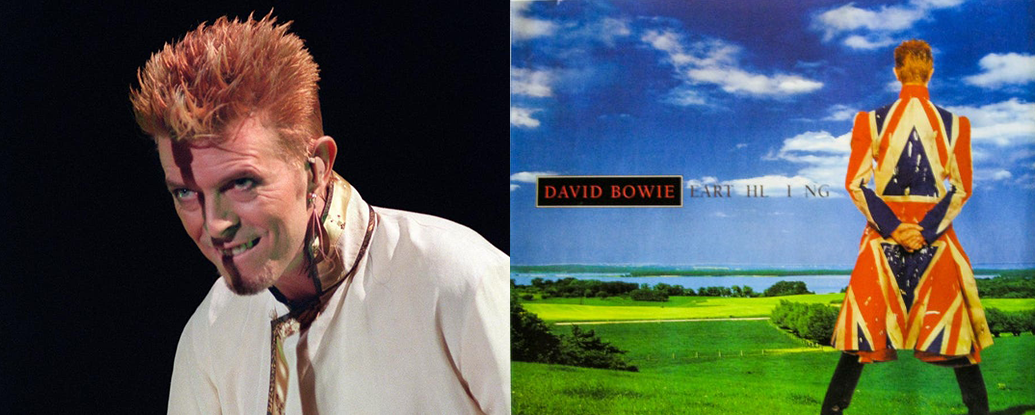By Keith Walsh
In a career built on unexpected moves, Bowie’s Earthling wasn’t entirely out of left field. The album, which was released 25 years ago on Feb 3, features the expected solid songwriting, and is the artist’s most electronic album, period, following the electronica of 1995’s 1. Outside.
As synthpop took hold commercially in the early 80s, Bowie rejected it strongly, maybe because in the late 70s he had already taken a deep dive into heavily electronic music with his Berlin Trilogy (Low, Heroes, Lodger). By 1984, bands like Eurythmics and Depeche Mode had already put a very dark spin on synthpop with music that seemed somewhat cold and sterile by the standards of the time. Time intervened, as did a tour with Trent Reznor, of Nine Inch Nails.
With Earthling, Bowie embraces the newly minted electronica genres of drum and bass and jungle, while making them his own. Whereas typical techno artists relied on drum machines, the rapid beats and frenetic drum tracks on the album (“Little Wonder” “Dead Man Walking,” “Telling Lies” ) were achieved in a unique fashion, by speeding up loops created by Zack Alford. Digital loopers and samplers were also employed on guitars and synths, putting Bowie strongly ahead of trends in studio technique while giving the album a powerfully eccentric sound.
Indeed, Earthling is brilliantly engineered, standing the test of time without suffering from sounded outdated. The highs are sparkling, the lows profound, the vocal and instrumental performances inspired. 25 years later, Earthling is a sparkling gem in a long, storied journey of creation.
What do you think? Is Earthling still relevant? Or worthy of the bargain bin? Comment below!
finis
